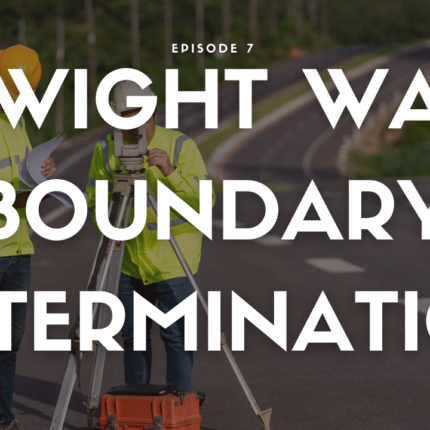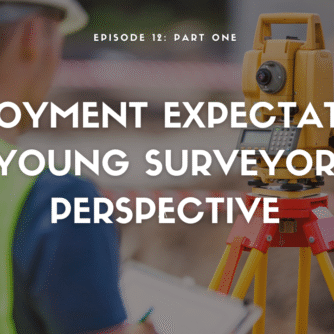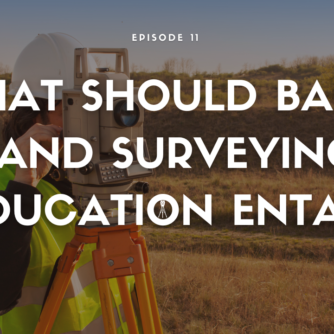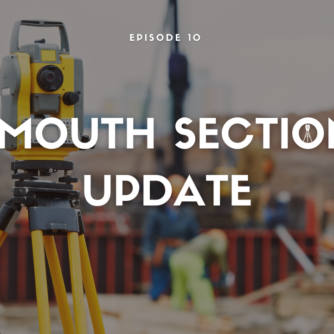Join us for an open discussion on your boundary-related issues on your projects.
Meeting summary for Roundtable Tuesdays (01/28/2025)
Quick recap
The team discussed the challenges and nuances of the surveying profession, particularly in relation to different states’ laws and standards, and the upcoming changes to the PS NCS module for Wisconsin. They also shared their experiences in surveying, discussed a property survey issue in Berkeley, California, and the process of linear regression and its application in measuring curb lines. The conversation ended with discussions on the importance of boundary knowledge, the challenges of gaining it through a single conference presentation, and the proposal for conducting a roundtable session on Tuesdays.
Next steps
- Jerry to create a slideshow or short video to advertise the roundtable discussions and post on LinkedIn or YouTube.
- Trent to schedule and organize the next roundtable discussion for February 18th.
- Trent to post information about the roundtable discussions on Mentoring Mondays email list and Facebook group.
- Kyle to prepare additional boundary problem examples for future discussions.
- Lauren to share marketing materials for the roundtable discussions on her LinkedIn network once available.
- Trent to create and post short videos to promote the roundtable discussions on social media channels.
Summary
Surveying Profession Challenges and Solutions
In the meeting, Kyle, Trent, and Jerry discussed the challenges and nuances of the surveying profession, particularly in relation to different states’ laws and standards. They also discussed the upcoming changes to the PS NCS module for Wisconsin and the potential for more randomized test questions. Jerry proposed creating a short PowerPoint presentation to introduce the mentoring program to new attendees, and they agreed to work on this over the next week. The team also discussed the complexities of the Federal Geodetic Committee’s standards and the need for better understanding of these among surveyors.
Surveying Experiences and Boundary Issues
In the meeting, Trent, Jerry, Jay, Kyle, Ricky, Loran, Mal, and James introduced themselves and shared their experiences in surveying. Trent emphasized the importance of providing a platform for sole practitioners and those nearing retirement to share their expertise. Kyle presented a boundary survey problem he encountered and sought feedback from the group. Jerry discussed the difference between the real world and education, highlighting the need to sift through information to solve problems. Ricky shared his experience working in Africa and his decision to get licensed in the US. Loran and Mal also shared their experiences and expressed their willingness to learn from the group. The conversation ended with Kyle preparing to share his screen for a presentation.
Berkeley Property Survey Discrepancies
Kyle discussed a property survey issue in Berkeley, California, where the legal description and boundaries were unclear due to the area’s history and lack of precise surveying. He presented evidence from various sources, including Sanborn maps, monument cards, and parcel maps, which showed inconsistencies in the property’s boundaries. Kyle also mentioned the possibility of using a scanner to recreate the block’s boundaries, but noted that this was not feasible at the moment. He then opened the floor for questions and potential resolutions to the issue.
Street Line Control and Establishment
Trent and Kyle discussed the establishment and control of various street lines in a downtown area. They focused on the control of Dwight, which is established by county monuments, and the establishment of the right of way. They also discussed the establishment of Hay Street, which was not directly referenced in the monument cards but was determined by measuring distances on the oldest curbs. They also touched on the issue of a gap between Dwight and Haste, which could not be solved by surveying it differently. Jerry asked about the meaning of a monument card, which Kyle explained as a document that establishes the right of ways in the area.
Linear Regression and Curb Line Measurement
In the meeting, the team discussed the process of linear regression and its application in measuring curb lines. Kyle explained that he typically uses a best fit line with least squared adjustment in AutoCAD to trace the curb lines. Jerry cautioned about the limitations of linear regression, particularly when it’s used in a north-south direction, and suggested that a true least squares fit should have perpendicular residuals. The team also discussed the potential for bias in the linear regression process, particularly when using CAD packages. The conversation ended with the team considering further investigation into the specifics of their CAD software’s linear regression capabilities.
Property Line Dimensions and Defense
The team discussed the importance of understanding the dimensions and origins of property lines for map defense. They discussed the concept of ‘black box’ and the need for accurate measurements. Trent suggested that the dimensions of the property lines could be correlated with the D2 reference. Kyle shared his approach of stating that measurements are unless otherwise stated, and he also mentioned his method of using coordinate geometry to determine distances. The team also discussed the concept of ‘de minimis’ and the question of who gets the rest in case of a gap. Jerry mentioned case law from Maryland and Illinois that suggests the gap goes to the junior owner. The team agreed that the determination of such matters depends on the specific situation and the case law in that area.
Property Boundary Measurement Discussion
The meeting involved a discussion about the legal and surveying aspects of property boundaries, specifically focusing on the measurement of 8/10ths of a foot and its implications. Kyle shared his experiences with clients and county surveyors regarding the placement of monuments and the importance of setting permanent markers. The team also discussed the potential for changes in land value and the need for accurate measurements. Jay and Trent raised questions about the placement of monuments and the need for a witness or actual for the northeast and northwest corners. The conversation ended with Jay’s observation about the importance of a clear line type legend and the inclusion of important details in drawings.
Residential Projects, Costs, and Quality
The team discussed the challenges of working with small residential projects and the need to balance costs with the quality of work. They considered the potential for additional revenue from review fees and the importance of educating clients about the value of their services. The conversation also touched on the complexities of legal descriptions and the potential for title gaps and overlaps. The team agreed on the need for a more efficient approach to monument blocks and the potential for retracing them. The discussion ended with a mention of the practice of holding two monuments for easier recording.
Boundary Knowledge and Training Challenges
The team discussed the importance of boundary knowledge and the challenges of gaining it through a single conference presentation. They agreed on the need for more training and the potential benefits of project-specific or one boundary training. The team also discussed the importance of considering the impact of boundary solutions on the neighborhood and the potential for confusion if there are no clear boundaries. They also touched on the use of surveyor’s reports to explain complex boundary issues and the potential for future discussions on boundary problems. The team also mentioned the need to consider the opinions of experienced surveyors like Dave Woolley and Ian Wilson.
Trent’s Roundtable Session Proposal
Trent proposed conducting a roundtable session on Tuesdays, with recordings available on the associated dropbox. Jerry suggested skipping the session scheduled for February 18th to allow more time for preparation and advertising. Kyle offered to assist with any boundary problems that might arise. Jerry agreed to work on short videos for the sessions. Jay, who will be traveling in May or June, promised to keep the team updated. Loran suggested that the session could be beneficial for a large network on LinkedIn, and Trent agreed to post on social media channels. The team expressed appreciation for Trent’s hard work and agreed to continue the sessions.
AI-generated content may be inaccurate or misleading. Always check for accuracy.
